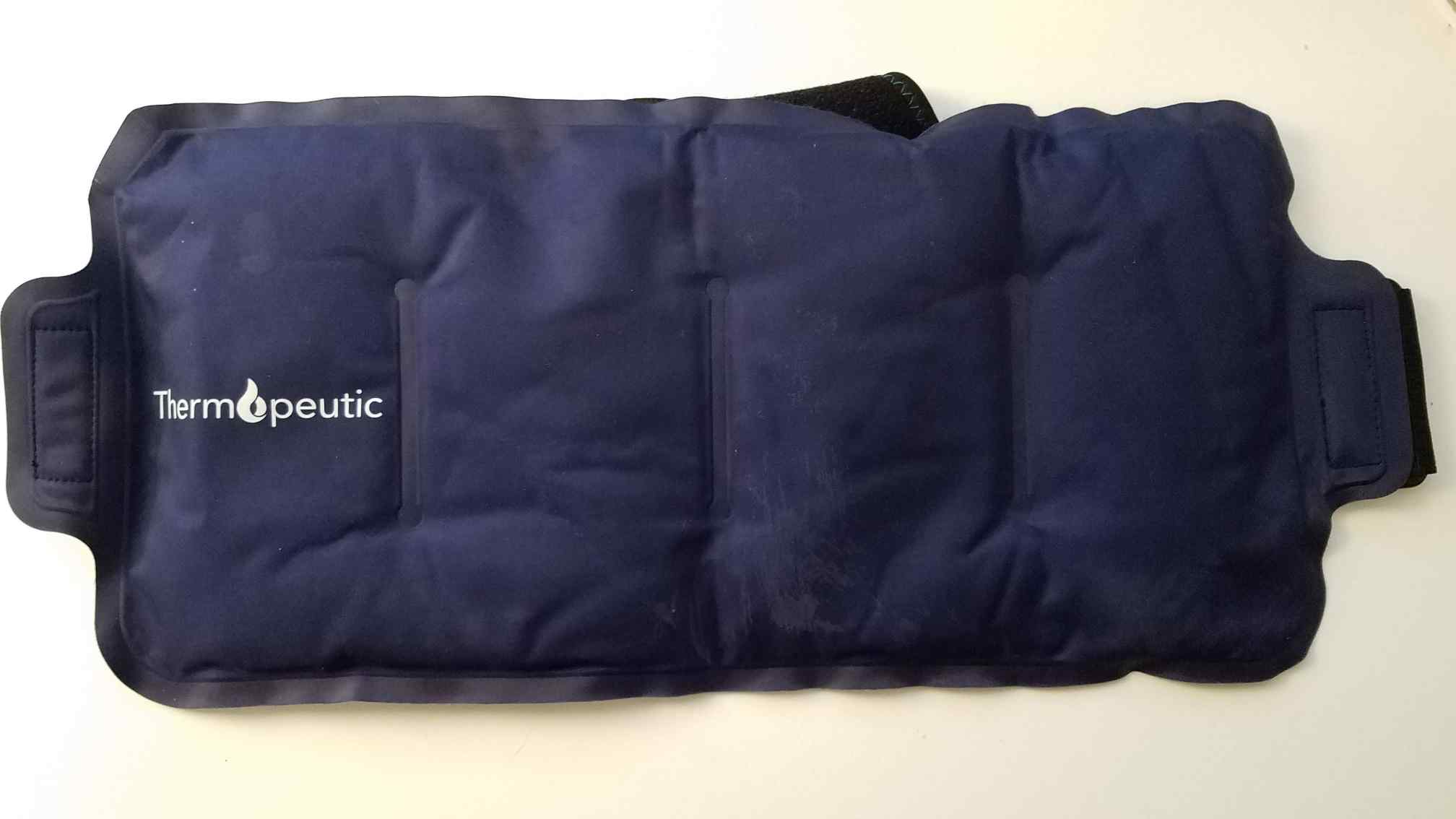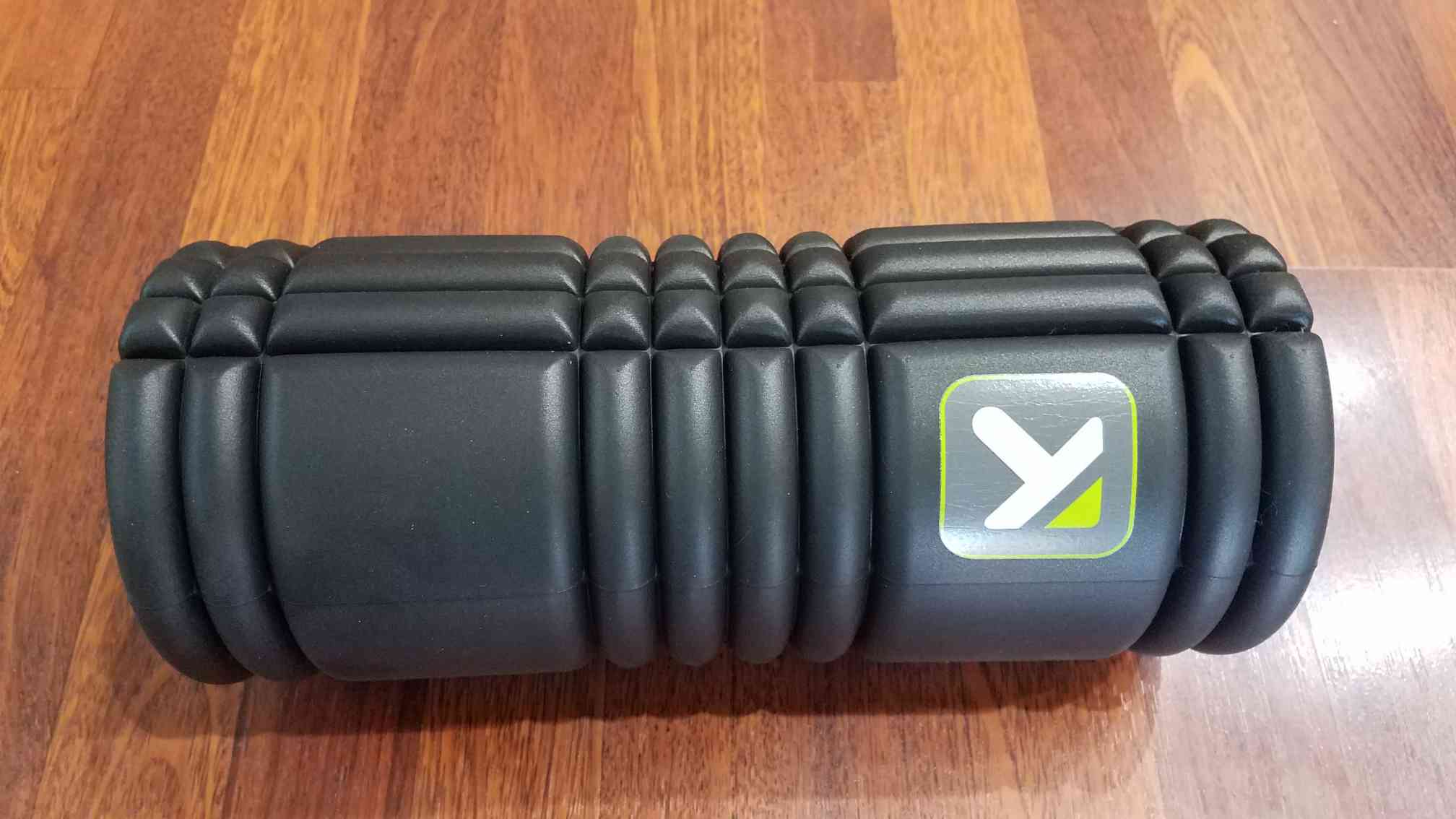Welcome, and thank you for stopping by. Today I want to talk about how to relieve sciatica pain at home. There are a lot of treatment options available, and you can spend a ton of time and money trying different methods. If you are interested in ways to get some much needed sciatic nerve pain relief, please continue reading.
Dealing with sciatic nerve pain is no fun at all. I am speaking from years of experience here. I have had sciatic nerve pain so bad that I could feel it all the way down to my toes. Driving to work and making my way from the parking lot to my desk was a feat in and of itself.
My commute to work is about 45 minutes each way, and there were days that I honestly didn’t know if I could stand the pain that long. It can be tough to find a comfortable driving position.
Sciatica pain can range from annoying to debilitating, and everyone reacts differently to the pain itself and to treatment.
What is sciatica?
The sciatic nerve runs from your lower spine through your butt, and down the legs to the toes. The purpose of this nerve is to supply sensation and strength to your legs and feet. Sciatica is pain that travels along the path of the sciatic nerve.
If you have pain that radiates from your low back through your butt and down your leg, you may have sciatica. Now, sciatica is not a diagnosis, but rather a symptom of something else going on.
When the sciatic nerve is irritated from a tight muscle or a herniated disc, for example, you can feel tingling, numbness, shooting pain down your leg, and even as far as your toes like my experience. I have had all of the sensations at different times in my life. The pain can feel like an electric shock running down your leg, kind of like the old saying of sticking your finger in a light socket.
What causes sciatica?
Sciatica is typically caused by a herniated disc pinching the nerve. When the nerve is aggravated, the pain will travel along the path of the nerve. This is what you experience when the pain goes through your butt, down your leg and even as far as the toes.
The piriformis muscle can also be a culprit of sciatic nerve pain. The piriformis muscle is located deep in your butt, and the sciatic nerve runs underneath it. If this muscle spasms, it can irritate or compresses the nerve, causing pain.
Sciatica can also pop up with muscle imbalances. For example, the muscles in the front and back of your legs and hips can tug and pull against one another if they are not balanced. These muscle groups need to work together to support and protect the spine. Subsequently, the muscles surrounding the spine may put pressure on the sciatic nerve, and “zing” you have pain radiating down your leg.
Sciatica symptoms
- Numbness and/or tingling down your legs, this can feel like pins and needles
- You can experience weakness in your leg, for me, this is my right leg
- You may feel a burning sensation
- Difficulty bending over due to the pain associated with that movement
My experience has been sharp pain down my right leg and tingling all the way down to my toes at times. Mostly, I feel pain in the outside of my right calf, shooting pain, tingling, and sometimes numbness. If you have experience with sciatica, you probably know what I am talking about.
Before you start any treatment plan, you should always check with your doctor or other healthcare providers first.
With all of that said, let’s get to it!
How to relieve sciatica pain at home
Improve core strength
Although I have always exercised during my life, I have never really focused on core strength. I had a pretty severe back injury in 2015 and was dealing with spinal stenosis for about 6 months. I was hunched over at the waist about 30-40 degrees.
This was a wakeup call of sorts for me. Over the past few years, I have been focusing more on core strengthening exercises, and I really feel like this has made a big difference in my overall back pain and sciatica flare-ups. Strengthening the muscles in your core can help to support your back better, and can also help to improve posture, so it’s a win-win.
If you are dealing with severe sciatica, it is, of course, best to talk to your doctor. I struggled with walking when my sciatica pain was at its worst, but gradually, I was able to do more and more. Now a lot of core-focused exercises I do are aimed at prevention and overall building strength.
You can check out the links to some of my favorite exercises below.
- Walking – excellent for gentle strengthening and stretching
- Elliptical – low impact option for full-body exercise
- Walking lunges – another great core-focused activity
- Renegade rows – this is more advanced, but is a great core exercise and can be used to build a strong core for back pain prevention
Depending on where you are at in your sciatica journey, you may or may not be able to perform some of these. Walking is a great place to start and then moving on to some of these others as you progress.
Use an inversion table
One of my favorites is using my inversion table. If you have not used an inversion table before, I have written several posts that you can check out, here, here, here. Inversion tables can be used for back pain recovery and as a maintenance program. When I was recovering from my injury in late 2015, my inversion table was a huge part of my recovery, and I continue to use it regularly as preventative maintenance so to speak.
Inversion turns gravity in your favor. By rotating backward, this allows the discs in your back a chance to recover and rehydrate. Think of a herniated disc like an Oreo cookie, when you squeeze the Oreo, the cream filling squirts out the sides.
It’s a similar concept when a disc is compromised, the disc space presses up against the nerve, causing pain. With inversion, by elongating the spine, you give the disc a chance to recover and relieve pressure on the nerve.
If you are interested in more information on inversion tables, you can check out my review here.
Use ice for sciatica pain
Using a cold pack, or regular ice can help to reduce inflammation and also numb the tissue, which can help to relieve sciatica pain. There are a few different ways to ice your back to relieve sciatica pain at home. Hang in there while I explain the icing process. Typically ice is applied during the first 72 hours when pain is the worst.
One method is to fill a paper cup with water and freeze it. When the water is frozen, you cut away the top half of the cup to expose the ice. You can have someone help you with this if you want to, or if you are able, do it yourself. Lay down on your stomach, or your side whatever is most comfortable and apply the ice in a circular motion in the area that hurts.
The goal of this process is to reduce inflammation and numb the area where it hurts. If the area is numb, you can work on stretching out the area and hopefully relieve some of the pressure on the sciatic nerve.
You can also use an ice pack on your low back for about 15-20 minutes at a time. The lower back is usually the culprit as far as where the nerve is pinched. The concept is the same, reducing inflammation and getting some pain relief from the sciatic nerve.
A heating pad for sciatica
Using heat helps to increase blood flow to an injured area, which helps in the healing process. Typically heat is applied after inflammation has been reduced through icing. I say typically because that is not always the case, some people, like me alternating between heat and ice seems to be the recipe for success.
Heat also helps to divert attention from the painful area, and it can just plain feel good. A heating pad will help to relax your muscles, which allows you to stretch out the area where the nerve is compressed. I have used heating pads, a hot tub, you can even take a warm bath, which can be quite relaxing.
Walking for sciatica pain
I mentioned earlier that I was in such bad shape that I didn’t know if I would be able to walk from the parking lot at work to my desk. That said, now walking is one of my absolute favorite exercises, and a good walk can be great for relieving sciatica pain.
Walking is a low impact exercise, and you would be surprised at how many muscle groups are engaged when you walk. Walking uses many of your core muscles, and a brisk walk can increase your heart rate.
I love walking and get out several times during my workday. Walking is a way to help me reduce stress, get the blood flowing, and helps me focus better. If you are able, walking is an excellent exercise for sciatica pain, and also back pain in general.
Stretching and yoga for sciatica
Okay, before we get too far into this, I realize that yoga is more than just plain old stretching. I am including stretching and yoga here for a reason, so let me explain.
Tight muscles, such as hamstrings and glutes (butt muscles) can wreak havoc on the sciatic nerve, something I am learning and will get into shortly. If your hamstrings are tight, these muscles can pull on your pelvis, and this can have an impact on the sciatic nerve by increasing stress on your low back.
So, with that said, I have recently started an online yoga program and have been focusing on the hips, hamstrings, and low back stretching. So there you have it, stretching and yoga have been tied together.
By stretching and strengthening hamstrings, glutes, and other muscle groups in your hips and low back, you can find some relief from sciatica and also help lessen future flare-ups. I highly recommend yoga for sciatica pain relief if you have never tried it before.
I’ve also used a yoga wheel. Read our Chirp Wheel review to learn more about yoga wheels and how they can be used for back pain relief.
Foam rolling for sciatica
A newfound friend of mine is a foam roller. As we have discussed, tight muscles can be a culprit that is contributing to your sciatic nerve pain. Using a foam roller can help to break up knots, and help loosen tight muscles.
Sitting for long periods makes the hip flexors tight, and this causes your glutes (butt) to have to compensate.
When these muscle groups are not well balanced and working together, this affects your pelvis and body alignment. All of these factors can lead to back pain and sciatica.
Using a foam roller can help to loosen up tight muscles, which can help bring some much-needed relief. Check out my article here for more information on the benefits of using a foam roller.
Low back stretcher
A low back stretcher is a half-moon shaped mechanism that fits under your low back. You lie down on your back, with the stretcher underneath your lower back. The purpose of a low back stretcher is to perform decompression.
A back stretcher helps to relax the muscles that support your spine, allowing the spine to elongate and decompress. These are an inexpensive option for sciatica and you may see some relief.
Conclusion
Sciatica is tricky, no doubt. As you can see, there are a lot of different ways to relieve sciatica pain at home. My experience has proven that there is not a sure-fire way that works for everyone. Heck, there isn’t really one thing that necessarily works for me all the time. I have learned to try different methods and find what works.
I have a lot of tools in my tool belt, so to speak, and when one thing works, I stick with it, and if something doesn’t work, I move on and try something else. Having dealt with sciatica and flare-ups for many years, I understand how complicated this issue can be. Just because one treatment method works for me doesn’t mean it will work for someone else.
I hope this post has been helpful and if you know someone who suffers from sciatica, please forward, or share this with them.
If you have any questions, please don’t hesitate to ask. Feel free to leave a comment below, or reach me directly.
Thanks for stopping by.
Steve
References:
https://www.spine-health.com/conditions/sciatica/sciatica-first-aid
https://www.spine-health.com/blog/4-commonly-overlooked-sciatica-remedies
https://www.medicalnewstoday.com/articles/324798.php
https://www.webmd.com/fitness-exercise/features/sciatica#2
https://www.healthline.com/health/how-ease-sciatica-without-surgery#alternative-treatments




Hi Steve. I used to suffer from all sorts of different back pains during my working life as a Builder. The work was often hard and the constant lifting, twisting, and stretching took its toll on my muscles and nerves. I would need to go to osteopaths and massage therapists regularly to try and get relief, and of course, this was expensive.
Then a good friend put me onto yoga. Some relief was immediate but t did take years of practice to undo a lot of the damage I had previously inflicted upon myself. It an ongoing process, and I am happy to say that with regular yoga sessions I have not had to go to an osteopath for several years now. Yoga has strengthened my core and muscles and also increased my flexibility so that I can now move much more comfortably than ever before and in many different ways.
Thanks for sharing your story and letting others know of the remedies to sciatica pain that have worked for you.
Thank you so much for your comment Andrew. For many years I have heard about the benefits of yoga and now I am taking some small steps to incorporate that into my life. Since doing short yoga sessions during the day, I am now spending close to 30 minutes per day focused on my back and core. I break this up with about 10 minutes in the morning before work, and the rest when I get home at night. Then the days that I go to the gym, I spend time on the rest of my body in addition. This whole back pain problem has really become a lifestyle for me.
Thanks for sharing your experience, I am glad to hear you have found something that works really well for you and I wish you continued success.